The ABS released their Housing Finance data today, showing the flows of loans in January 2017. Those following the blog will not be surprised to see investor loans growing strongly, whilst first time buyers fell away. The trajectory has been so clear for several months now, and the regulator – APRA – has just not been effective in cooling things down. Investor demand remains strong, based on our surveys. Half of loans were for investment purposes, net of refinance, and the total book grew 0.4%.
In January, $33.3 billion in home loans were written up 1.1%, of which $6.4 billion were refinancing of existing loans, $13.6 billion owner occupied loans and $13.5 billion investor loans, up 1.9%. These are trend readings which iron out the worst of the monthly swings.
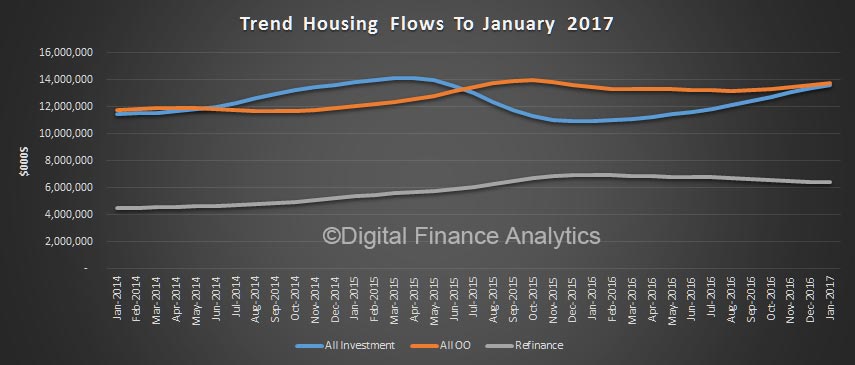 Looking at individual movements, momentum was strong, very strong across the investor categories, whilst the only category in owner occupied lending land was new dwellings. Construction for investment purposes was up around 5% on the previous month.
Looking at individual movements, momentum was strong, very strong across the investor categories, whilst the only category in owner occupied lending land was new dwellings. Construction for investment purposes was up around 5% on the previous month.
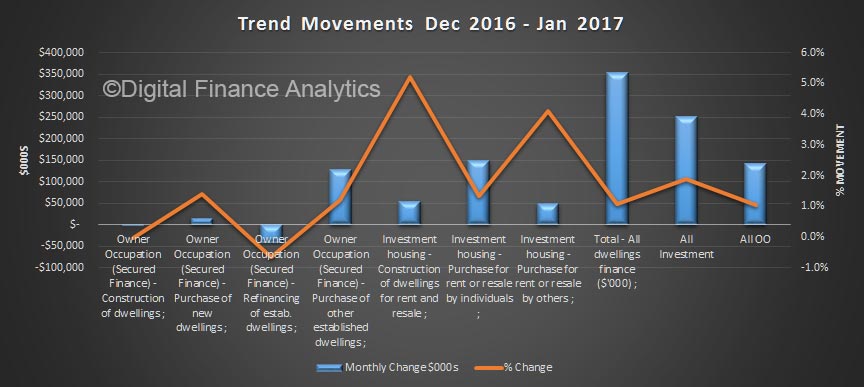 Stripping out refinance, half of new lending was for investment purposes.
Stripping out refinance, half of new lending was for investment purposes.
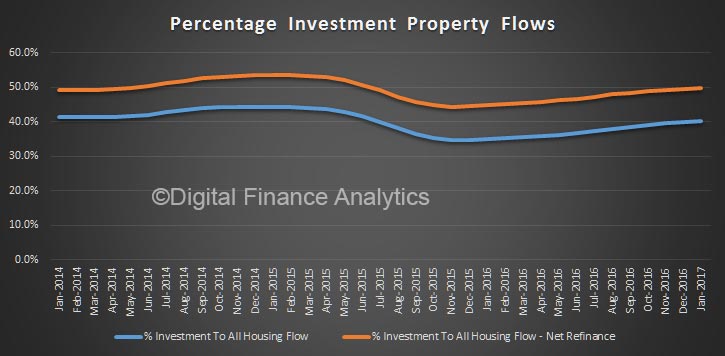 First time buyers fell 20% in the month, whilst using the DFA surveys, we detected a further rise in first time buyers going to the investment sector, up 5% in the month.
First time buyers fell 20% in the month, whilst using the DFA surveys, we detected a further rise in first time buyers going to the investment sector, up 5% in the month.
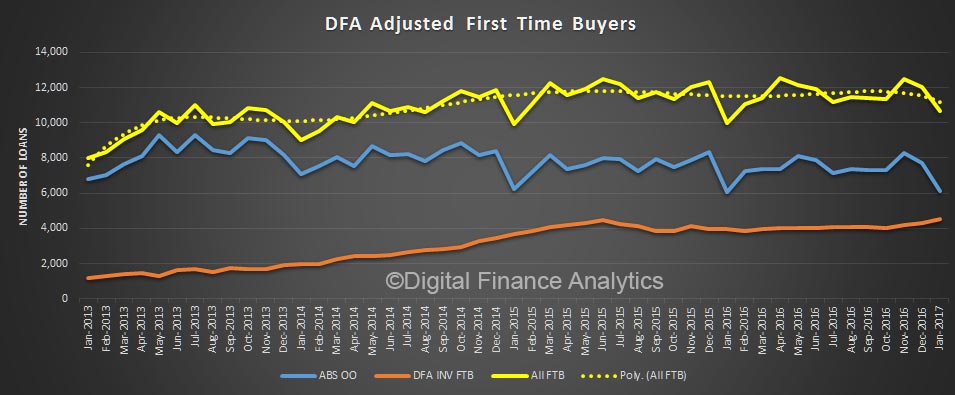 Total first time buyer activity fell, highlighting the affordability issues.
Total first time buyer activity fell, highlighting the affordability issues.
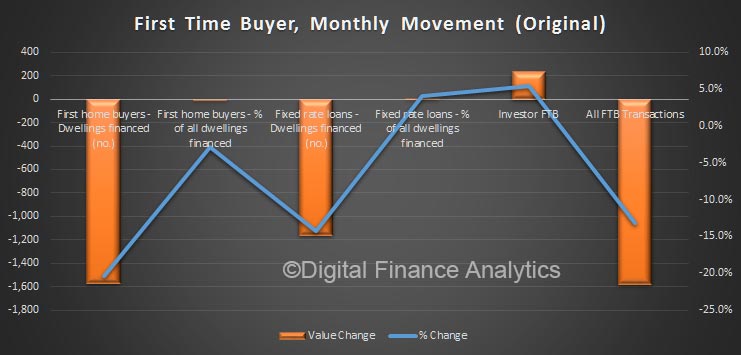 In original terms, total loan stock was higher, up 0.4% to $1.54 trillion.
In original terms, total loan stock was higher, up 0.4% to $1.54 trillion.
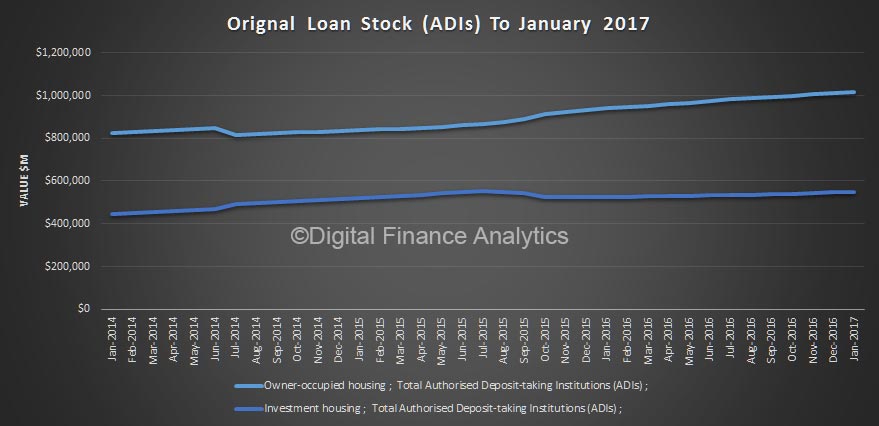 Looking at the movements across lender types, we see a bigger upswing from credit unions and building societies, compared with the banks, across both owner occupied and investment loans. Perhaps as banks tighten their lending criteria, some borrowers are going to smaller lenders, as well as non-banks.
Looking at the movements across lender types, we see a bigger upswing from credit unions and building societies, compared with the banks, across both owner occupied and investment loans. Perhaps as banks tighten their lending criteria, some borrowers are going to smaller lenders, as well as non-banks.
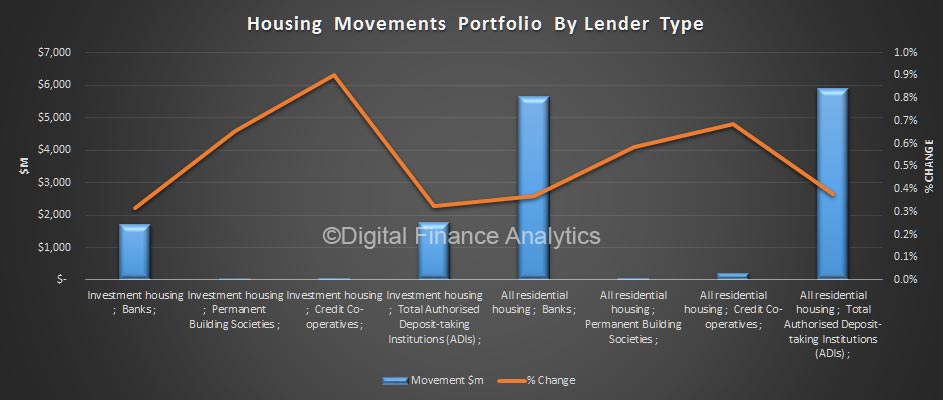 We think APRA should immediately impose a lower speed limit on investor loans but also apply other macro-prudential measures. At very least they should be imposing a counter-cyclical buffer charge on investment lending, relative to owner occupied loans, as the relative risks are significantly higher in a down turn.
We think APRA should immediately impose a lower speed limit on investor loans but also apply other macro-prudential measures. At very least they should be imposing a counter-cyclical buffer charge on investment lending, relative to owner occupied loans, as the relative risks are significantly higher in a down turn.
The budget has to address investment housing with a focus on trimming capital gain and negative gearing perks. The current settings will drive household debt and home prices significantly higher again.

One thought on “Investors Boom, First Time Buyers Crash”